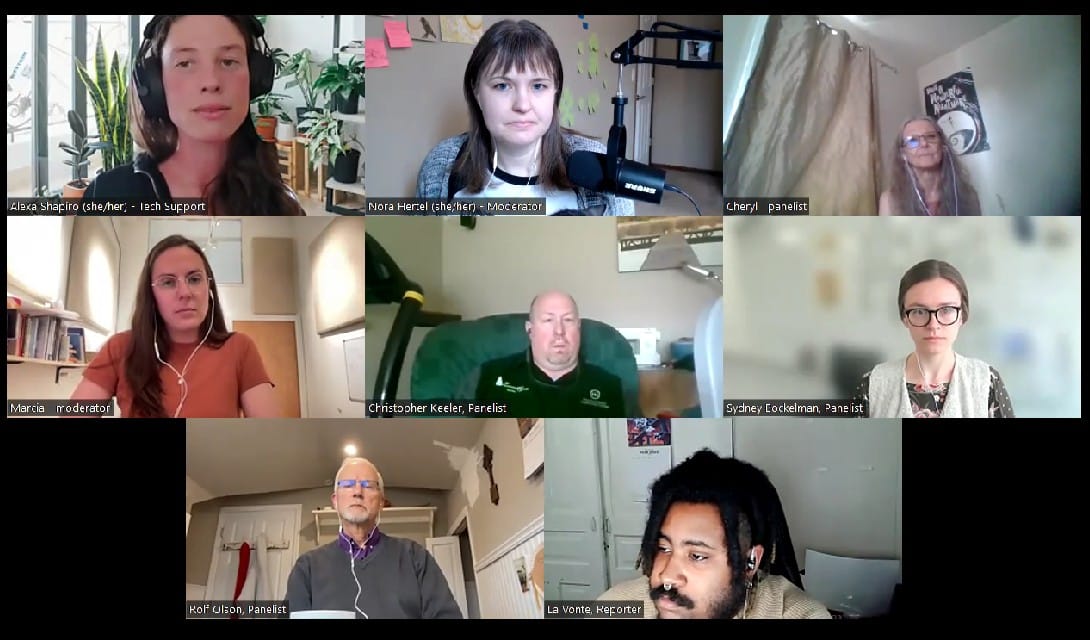Minnesota’s ‘red flag law’ is a year old. What have we learned?
Law enforcement agencies, family members, and courts in Minnesota slowly started to use the extreme risk protection order (ERPO), or ‘red flag law,’ since it went into effect in January 2024

Researchers say extreme risk protection order laws help temporarily remove guns from people in crisis, but more research needs to be done and more awareness of the law is needed in Minnesota.
Minnesota’s extreme risk protection order (ERPO) law, or ‘red flag law,’ went into effect in January 2024. Law enforcement agencies, family members, and courts around the state slowly started to use the law to temporarily remove firearms from people in crisis.
Some consistent data
Several studies have shown that red flag laws can reduce suicide risk, said Dr. April Zeoli, an associate professor of health management and policy core director at the Institute for Firearm Injury Prevention at the University of Michigan.
“The results are remarkably consistent from study to study, and that increases our confidence that we're finding something real,” she said. “So we can say that it looks like this is a really promising tool for suicide prevention.”
Impact on homicides
It’s difficult for researchers to determine the success of ERPOs on homicide rates, Dr. Zeoli said.
“For homicide, you don't necessarily know the name of the victim to look at for death records,” she said. “As a perpetrator of a homicide it's really complicated, because maybe they're caught, maybe they're not caught; maybe there are charges, maybe there's a conviction; and you have to find all of that data, which is difficult.”

Furthermore, researchers would also have to seek data on attempted homicides or firearms injuries.
Go Deeper: Individual vs. Population-level Impacts
Data at the individual level will increase as time goes on, which will increase researchers’ ability to look at the law’s impact on a population level, Dr. Zeoli said. When asked how much data she would want to collect and analyze to determine success, Dr. Zeoli said she didn’t know.
“It depends on a lot of things: how much the state is using it, whether they're mostly using it for suicide versus violence against others – a lot of things,” she said.
Dr. James Densley, professor and department chair of criminology and criminal justice at Metro State University, and Dr. Jillian Peterson, a professor of criminology at Hamline University, collected and analyzed data from the first year of Minnesota’s ERPO law. They published their findings in the Minnesota Star Tribune in February.
Densley said he understands why researchers look for the population-level impact of red flag laws. However, he thinks the law’s impact on individuals can provide meaningful insights.
He would like to see research that tracks individuals after their ERPO expires: one year, two years, five years, 10 years down the line. It would follow them to see if they have a criminal history, suicide attempts, history of domestic violence, and more.
“You have to look at that and play the long game a little bit with this to see whether or not there’s impact. Because that’s the other thing: we removed the firearm and they didn’t take their own life this year, but what does that look like five years from now? Are we tracking that data? I don’t know that we are, or if we are, how do you understand it in that way?
“Those are the kind of open questions when I think about it,” he said. “I don’t believe we’re going to see population-level change. I don’t think we’re going to see suicide plummet … or domestic violence. ... That type of stuff is just not going to happen with an ERPO, but I think at the micro level and perhaps more qualitatively you can start to see where it’s making an impact on people’s lives.”
Dr. Densley would like to conduct further research with people who have their guns removed to learn what the process was like for them.
However, Dr. Densley and Dr. Peterson’s funding was not renewed by the Minnesota Legislature.
 Project OptimistJen Zettel-Vandenhouten
Project OptimistJen Zettel-Vandenhouten
In Minnesota
A total of 135 ERPO petitions were filed in Minnesota in 2024: law enforcement agencies filed 71% of petitions for ERPOs, while only 16% came from family members, according to the data compiled by Dr. James Densley, professor and department chair of criminology and criminal justice at Metro State University, and Dr. Jillian Peterson, a professor of criminology at Hamline University.
Judges granted 95% of petitions that lasted for 14 days and 78% that ranged from six months to one year.

Here’s what they found from the first year of petitions:
- 93% of respondents were male,
- 83% were white,
- The average age of respondents was 40,
- 22% had children who lived in their homes,
- 58% had a history of suicidality,
- 41% had documented mental health issues,
- 40% had substance use concerns,
- 15% had prior arrests,
- And 50% had civil court histories.
During an interview with Project Optimist and Minnesota Women’s Press, Dr. Densley said law enforcement agencies in rural Minnesota started to file ERPO petitions earlier in the first year than those in the state’s large cities.
Subscribe to Project Optimist
Trustworthy local news sent to you for free every Wednesday.
No spam. Unsubscribe anytime.
Limitations of the law
The implementation of ERPOs is often slow, experts said.
Law enforcement officials have to put protocols in place to investigate and write ERPO petitions, Dr. Zeoli said.
The protocols involve multiple agencies and dictate how guns are removed from a home and how to store them, said Jennifer Becker, director of the National Center on Gun Violence and Relationships at the Battered Women’s Justice Project. Once the protocols are established, staff have to be trained.
“You can't even get to training folks if you don't have the policy, right?” Becker said. “So I think because so many different stakeholders are required to carry out implementation, that in itself becomes a barrier.”

Officials in King County, Washington, found success by adapting the system they use for domestic violence protection orders to ERPOs, Becker said.
“When they passed an ERPO, that structure was already in place, and so they also handle the ERPO implementation,” Becker said. “They've been at it for several years, so they do collect data, some of which they've even worked with researchers to take and analyze. They're probably the most robust model of implementation and data analysis.”
 Project OptimistNora Hertel
Project OptimistNora Hertel
The law enforcement officers responsible for removing a person’s guns often don’t know how many guns the person actually owns, which is a limitation of the law, Dr. Zeoli said.
“We don't have records of how many guns people own and what guns they own,” Dr. Zeoli said. “So somebody owns five guns and they turn over four; we generally don't know that.”
The ERPO petition, the court hearing and police reports could offer clues. Search warrants could also address the issue, Dr. Zeoli said.
Lack of access to mental health resources is a limitation of the entire system, not ERPOs, Dr. Zeoli said.
“Certainly what we're also hearing from communities is that there are just not enough resources, particularly around mental health,” Dr. Zeoli said. “They're not accessible, they're not affordable, or they're just not there … so that is a limitation of the larger system, something that ERPO also plays a part in.”
 Project OptimistJen Zettel-Vandenhouten
Project OptimistJen Zettel-Vandenhouten
Common misconceptions
The order is not lifelong, Dr. Zeoli said.
“It is a temporary order, and there is due process. There'll be a court hearing, and … you can contest it. Each state provides the opportunity to terminate the Extreme Risk Protection Order early,” she said.
Another misconception is that the measure will be abused.
“There is this specter of a vengeful female who is just going to do whatever she can to get back at a guy that she thinks has wronged her. That is largely a myth,” Dr. Zeoli said.
Red flag laws include penalties for people who provide false evidence and perjure themselves, Dr. Zeoli said. In Minnesota, the minimum penalty for perjury is a fine of up to $10,000, up to five years in prison, or both.
“We don't see those penalties being used, which suggests that judges aren't seeing cases that they think are bogus,” she said.
Furthermore, Becker said the goal of ERPOs isn’t gun control.
“We have decades and decades of research about risk and about lethality, and it’s about removing the risk – in this case firearms – in this moment that exponentially increases the odds that someone is going to die in the near term,” she said.
People should look at the law as a crisis intervention tool, Dr. Densley said.
This story was edited and fact-checked by Nora Hertel. It is part of a collaboration with Minnesota Women's Press and was also published in the November/December issue of the magazine.
